公開日 2020年06月26日
更新日 2020年06月26日
Sansai Picking in the Japanese Countryside
This series follows two English teachers, Bethany Johnson (Canada) and Mayu Abe (Japan), living in and exploring the countryside of Sanagochi.
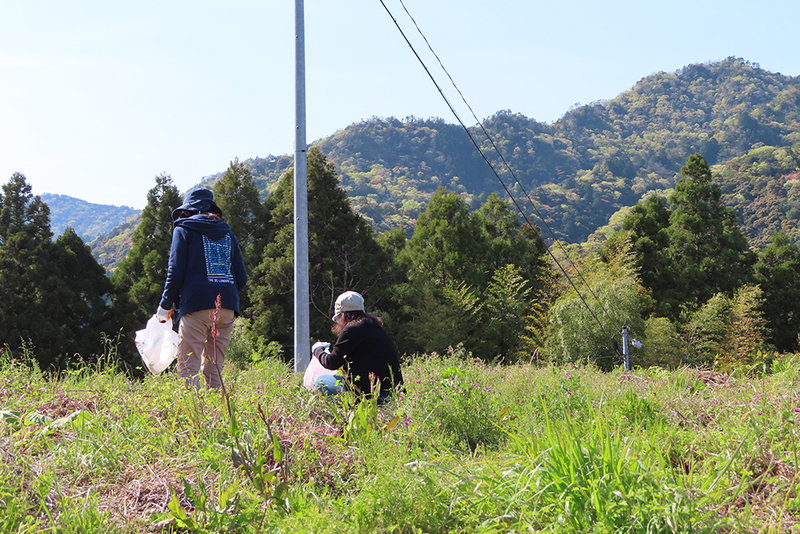
There’s such a peace and gentleness here in the countryside of Sanagochi. When winter loosens its grip and spring rises, I always feel uplifted by the warm temperatures, the lush green scenery and freshly-bloomed flowers.
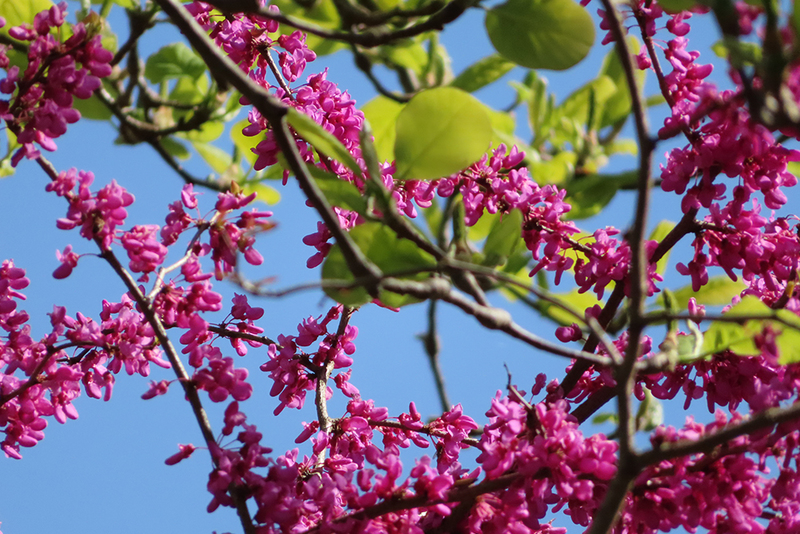
This is the season for new growth. The people of Sanagochi live deep in the mountains, and have become adept at hunting for herbs and vegetation that may be useful in their daily lives. Even wild plants can be edible.
These mountain vegetables are called sansai (山菜), and grow in abundance here in Sanagochi. When April arrives, a plant called warabi springs up from the dry earth and overtakes mountains and fields. My friend, Miki Yoneda, enjoys picking the warabi from her fields in the spring, and this year, she invited me to try picking sansai for the first time. Miki told me to look for a weed with clusters of brown, twisted nibs. This is warabi; often used in spring cooking, and a vegetable that Miki assured me was delicious, although it looks a little suspicious to me. Having lived in the city all my life, I don’t see plants like warabi very often. Actually, Sanagochi has many flowers and plants I’ve never seen before. Tokushima’s climate is much warmer than Canada, and rarely gets snow, so it makes sense there is a large and unique variety of vegetation.
Useful weeds
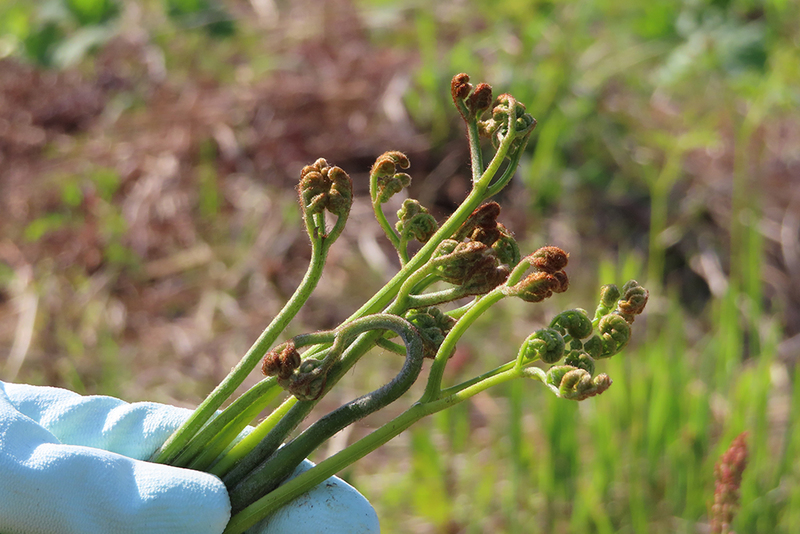
When I was young, I used to help pull weeds in my mother’s garden, and I never saw any of these quick-growing plants as having any use. That’s why learning about sansai was interesting for me; edible weeds like itadori and warabi are quite tasty, if you flavour them right.
But not all warabi is good for eating. While we were picking, Miki instructed me to look only for the curled up leaves; once the nibs unfurl into full, matured leaves, the warabi’s flavour changes. Moreover, they can be poisonous at this stage, so the young shoots are sought out on purpose.
How to cook warabi
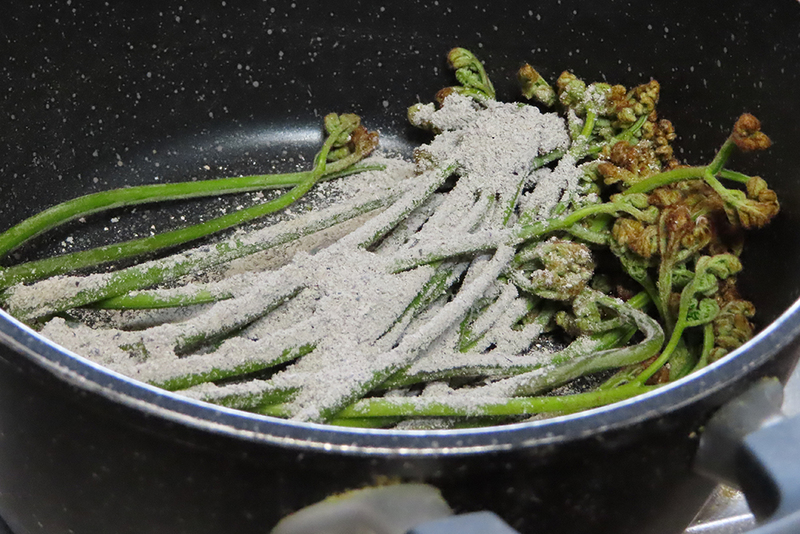
After it’s picked, warabi must be blanched to remove its astringency. Miki showed me the traditional method, using ash. First, a bundle of warabi is dusted with ash, and then it’s suffused in boiling water. The vegetables are left overnight, or even a few days, to blanch. After a thorough wash to get rid of the ash, they’re ready to be flavoured. You can choose ingredients to your taste, but I was recommended to boil the warabi with dashi powder, soy sauce and a bit of sugar. Warabi has an earthy, slightly bitter taste comparable to asparagus, though it is a little more slimy in texture. It’s a good side dish!
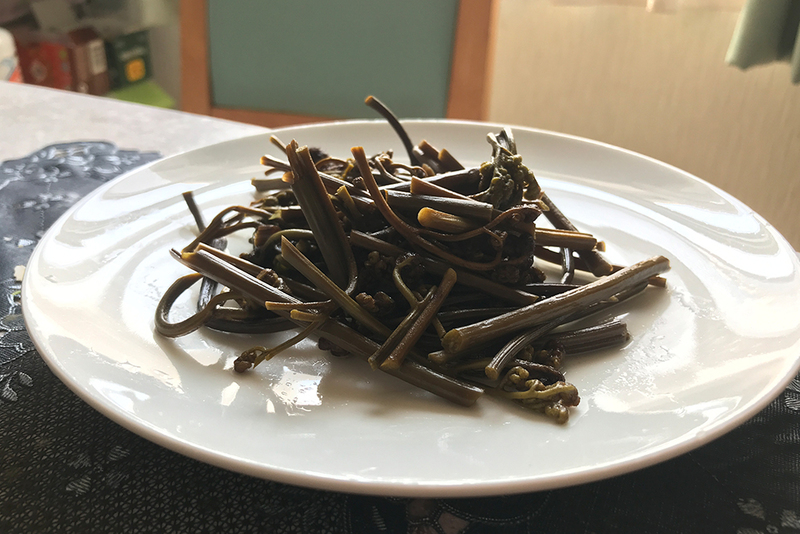
As a true city girl, I still have a lot of learn about life in the countryside. I’m thankful for each chance I get to talk with the people of Sanagochi, and try new things!
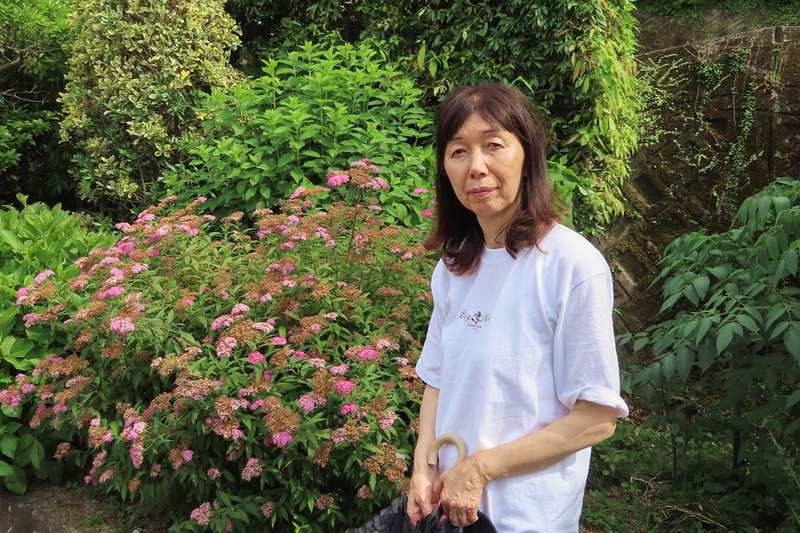
Miki Yoneda

